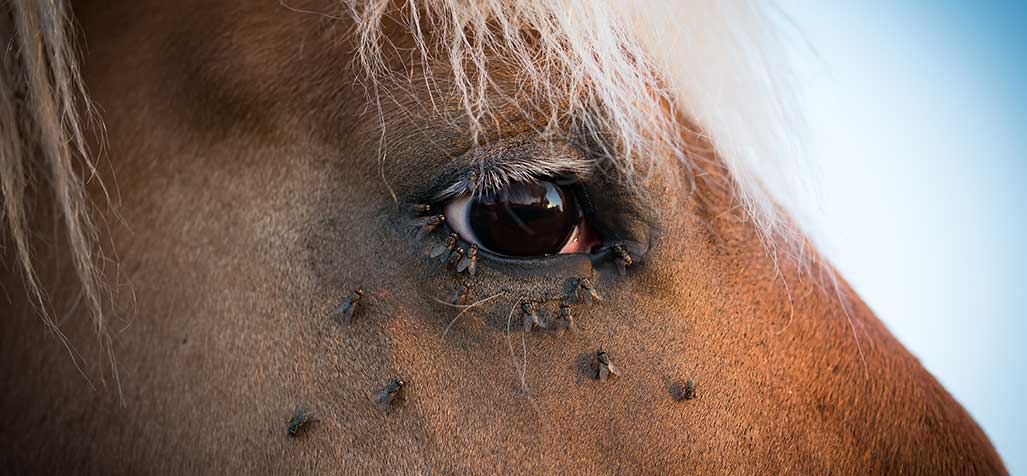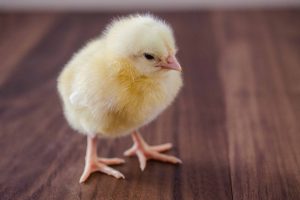Which is exactly why you should. You need to know what you’re up against.
Stable and house flies are among the most common flying pests found in horse environments, but there are a few interesting differences between them.
House flies feed on garbage, uncovered food and organic materials such as manure. Stable flies feed on blood only. House flies don’t bite, but their presence is extremely annoying to horses. Stable flies have a very painful bite, using their bayonet-like mouthparts to pierce the skin and extract a blood meal, leaving wounds that can become infected.

Both house and stable flies can transmit disease and infection. They also play a key role in the development of cutaneous habronemiasis, commonly referred to as “summer sores.” These nasty, weeping skin lesions are a reaction to the migration of larval stages of two types of stomach worms (Habronema muscae and Draschia megastoma). When infected flies feed on a wound or abrasion, the worm larvae are transferred and cause the lesions.
Both house and stable flies utilize manure as a breeding ground for larvae development. It takes only seven to ten days for house flies to develop from an egg to an adult; stable flies require anywhere from fifteen days to five weeks to develop.
Mounting Your Defense
The more you lean about these annoying, disease-spreading flies, the more you want to defend your horse. Creating an effective “No Fly Zone” requires a multi-zone approach:
Block: Create an actual physical barrier to keep flies and pests off your horse’s face and ears.
Repel: Use products that repel/kill flies and pests on your horse and also in his environment.
Reduce: Decrease the fly population in the barn and on the whole farm.
As a proactive horse owner, you’re probably already taking steps to block flies (think fly mask, fly sheet, fly boots) and repel them (think spot-ons, sprays, wipes and roll-on repellents). But are you using the final tool in the “No Fly Zone” approach to actually reduce the number of flies?
It’s possible to significantly reduce the fly population at the same time you feed your horse. It’s just a matter of adding a feed-through fly control product like Farnam SimpliFly Feed-Thru Fly Control with LarvaStop to your daily routine. It’s really that easy.
STARTING EARLY IN THE SPRING WILL MAKE THE ENTIRE FLY SEASON EASIER SINCE YOU’LL HAVE FAR FEWER FLIES TO DEAL WITH.
A daily amount is fed based on how much your horse weighs, so you should use a weight tape to get a close approximation of his weight.
Follow label directions and add the correct amount to your horse’s feed; you can top dress or mix it in. SimpliFly fly control is extremely palatable, and horses eat it readily. You can use it with any kind of feeding program, no matter what kind of forage or commercial feed you use, including senior or complete rations. (It can be fed to all horses except pregnant mares and breeding stallions. Consult your veterinarian if you have any questions.)
Starting early in the spring will make the entire fly season easier since you’ll have far fewer flies to deal with. Continue using Farnam SimpliFly with LarvaStop Feed-Thru Fly Control until cold weather restricts fly activity. Use the product continuously on all horses on the premises throughout fly season for optimal results.
Whether this is your first year owning horses or you’ve had them for decades, this can be the first fly season you enjoy a significant reduction in the fly population.





